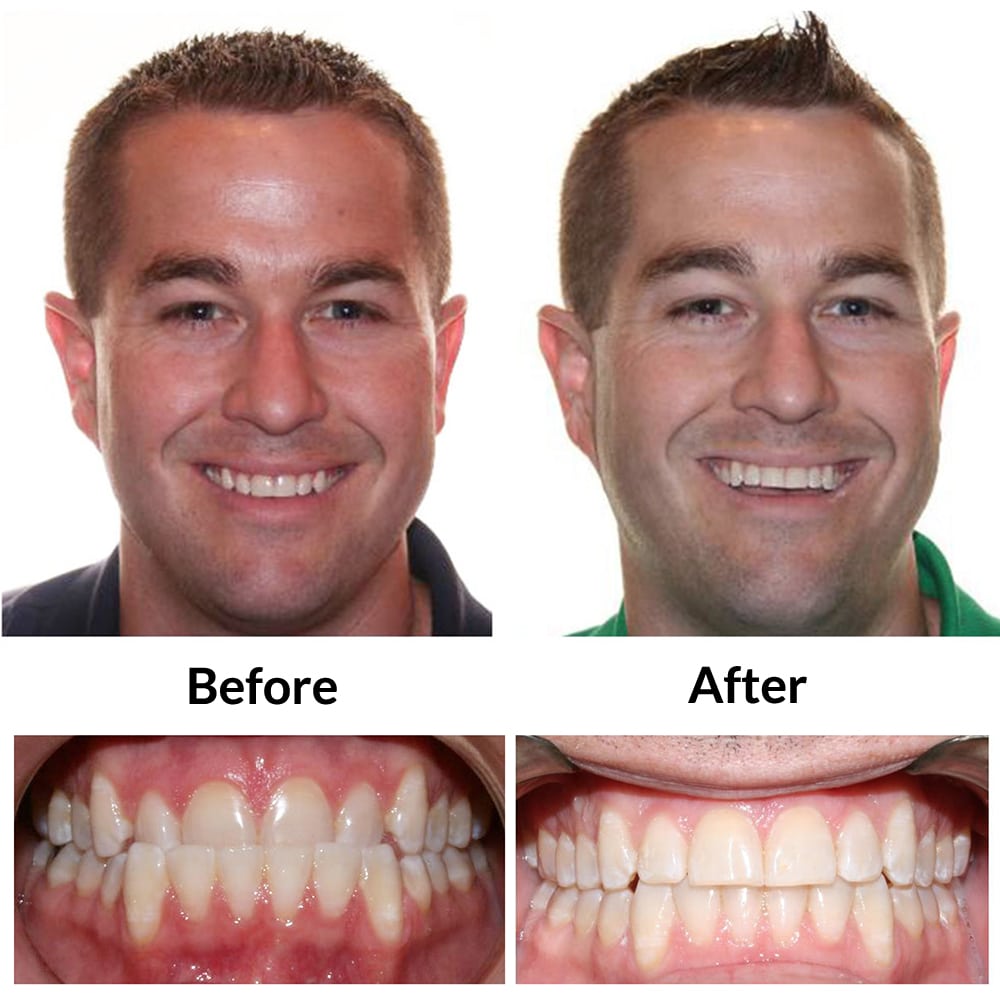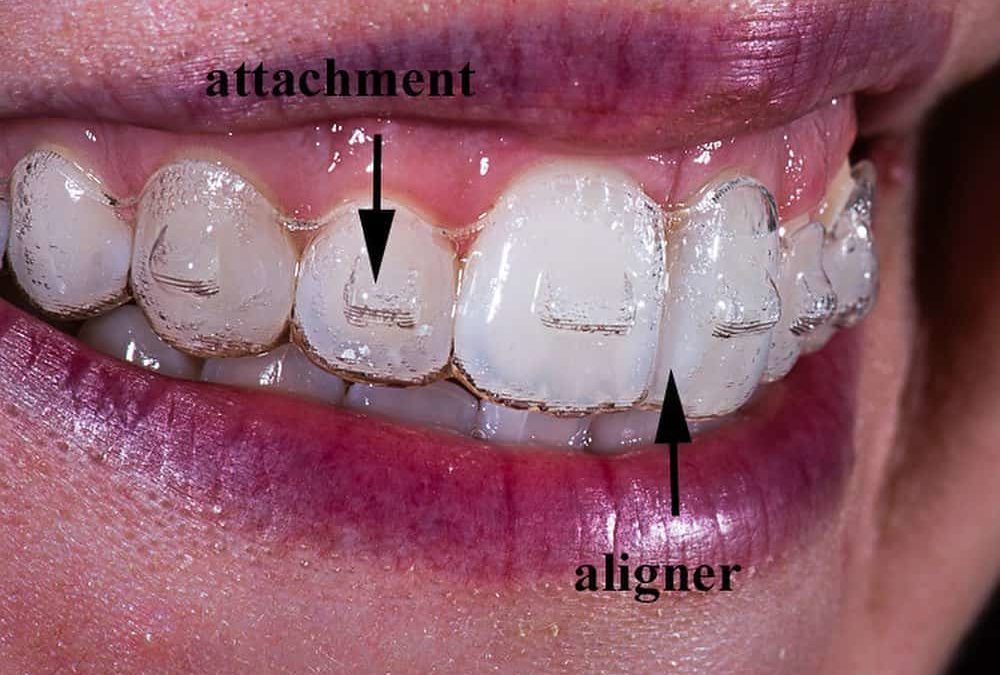Top Factors to Select Invisalign Over Other Orthodontic Treatments
Top Factors to Select Invisalign Over Other Orthodontic Treatments
Blog Article
Invisalign vs. Typical Braces: Which Alternative Is Right for You?
When thinking about orthodontic therapy, the selection in between Invisalign and conventional dental braces presents a number of essential factors that merit careful examination. Invisalign offers a discreet choice with detachable aligners, while typical braces offer a much more noticeable yet efficient option for severe misalignment. Each choice incorporates distinct advantages and drawbacks associated with aesthetics, comfort, treatment duration, and cost. Recognizing these nuances is crucial for making an educated decision that aligns with your individual preferences and way of life. The inquiry stays: which option will ideal satisfy your orthodontic demands and expectations?
Summary of Therapy Alternatives

In comparison, conventional braces include metal braces and cords that are bonded to the teeth. This method applies continuous stress with time to attain positioning. While effective for complex orthodontic issues, standard braces require regular visits for changes and can pose challenges in preserving dental hygiene because of the difficulty of cleaning up about braces and cords.
Both choices have their advantages, and the choice frequently rests on particular oral conditions, way of life choices, and patient compliance. Eventually, seeking advice from an orthodontic specialist is important for determining the most appropriate treatment plan customized to private requirements. Comprehending the subtleties of each option can considerably affect the general success of orthodontic treatment.
Visual Factors To Consider
A considerable aspect influencing the option in between Invisalign and traditional braces is the aesthetic appeal each therapy uses. Invisalign aligners are crafted from clear plastic, making them virtually undetectable when worn.
In contrast, conventional braces are composed of steel braces and wires, which can be extra recognizable. While innovations in orthodontic technology have led to the development of smaller sized braces and colored elastics, typical braces still keep a more noticeable account. For some individuals, the presence of dental braces may deter them from seeking necessary therapy.
Ultimately, the choice between Invisalign and typical braces may hinge on personal preferences pertaining to looks. Patients that prioritize discernment frequently favor Invisalign, while those that are much less worried regarding presence may select standard braces. Recognizing the aesthetic effects of each option is crucial for making a notified choice that lines up with one's way of living and preferences.
Convenience and Convenience

In regards to benefit, Invisalign aligners additional resources are detachable, making it possible for people to appreciate their favorite foods without constraint and preserve optimal oral health. Cleaning and flossing are streamlined, as the aligners can be secured during these regimens, whereas standard dental braces call for careful steering around wires and braces.
Additionally, Invisalign's dynamic system enables for less orthodontic visits. Patients typically receive multiple collections of aligners at as soon as, which can streamline the therapy procedure and lower time invested in the orthodontist's chair. In contrast, traditional dental braces require routine adjustments, making them less practical for those with hectic schedules. Invisalign. Overall, the convenience and comfort of Invisalign make it an attractive choice for many people seeking orthodontic therapy.
Treatment Duration and Effectiveness
While both Invisalign and traditional dental braces are efficient in dealing with dental imbalances, the period of therapy can differ substantially in between the two alternatives. Usually, Invisalign therapy can take anywhere from 12 to 18 months, relying on the complexity of the situation. The clear aligners function by gradually shifting teeth into their preferred settings, and routine follow-ups with an orthodontist help make certain progression continues to be on track.
In comparison, typical dental braces commonly need a longer commitment, normally varying from 18 months to 3 years. This results from their fixed nature and making use of cords and brackets, which can be a lot more effective for extreme imbalances and complex situations (Invisalign). The treatment efficiency of typical braces is well-documented, as they enable for exact adjustments and higher control over tooth motion
Inevitably, the choice in between Invisalign and standard dental braces may depend upon both the expected therapy duration and the certain dental concerns handy. Consulting with an orthodontist is essential, as they can offer tailored referrals based on specific demands, guaranteeing the chosen approach lines up with wanted results and durations.
Expense Comparison and Insurance Policy Alternatives
Expense plays a considerable duty in the decision-making process for individuals considering orthodontic treatment, whether choosing Invisalign or traditional braces. Generally, the cost of Invisalign varieties from $3,000 to $8,000, while typical dental braces commonly set you back in between $2,000 and $6,000. Factors influencing these prices consist of the complexity of the case, the duration of therapy, and geographical area.
Many oral insurance coverage strategies give partial coverage for orthodontic treatments, however the specifics can differ commonly. Normally, standard braces check that may be extra frequently covered by insurance coverage plans contrasted to Invisalign, which some insurers categorize as an aesthetic treatment.
Furthermore, several orthodontic practices offer adaptable layaway plan, making both therapy alternatives much more accessible. Clients need to inquire regarding possible funding choices and discounts for upfront payments. Evaluating the total cost, consisting of insurance benefits and settlement strategies, is vital for making a notified decision that aligns with both view publisher site visual choices and budget plan factors to consider.

Final Thought
In recap, the choice between Invisalign and conventional dental braces rests on multiple aspects, consisting of aesthetic preferences, convenience, treatment period, and price. Invisalign supplies a very discreet, detachable alternative that assists in oral health and nutritional adaptability, while standard dental braces may be better for complex dental issues and usually come with a reduced cost factor. Inevitably, appointment with an orthodontist is necessary to examine specific circumstances and identify the most ideal treatment option for accomplishing optimum oral alignment.
When thinking about orthodontic treatment, the selection between Invisalign and typical braces offers several crucial elements that merit cautious evaluation.Comparing Invisalign and traditional braces exposes unique therapy alternatives for orthodontic modification.While both Invisalign and traditional dental braces are effective in fixing oral misalignments, the duration of treatment can vary dramatically in between the two choices.Expense plays a significant function in the decision-making process for people thinking about orthodontic treatment, whether choosing for Invisalign or traditional dental braces.In summary, the selection between Invisalign and traditional dental braces hinges on multiple aspects, consisting of aesthetic preferences, convenience, therapy period, and expense.
Report this page